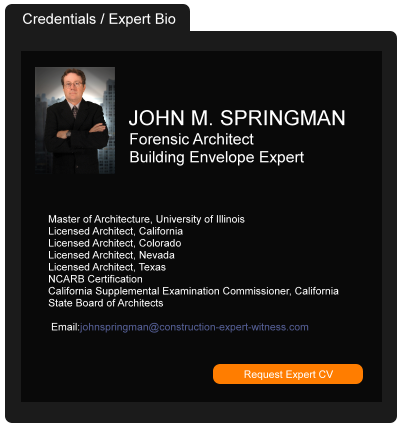Philadelphia Court Rejects Expert Methodology for Detecting Asbestos
October 11, 2017 —
Christian Singewald, Wesley Payne & Jonathan Woy - White and Williams LLPLawsuits against talcum powder manufacturers have recently made headlines for the multimillion dollar verdicts returned in favor of plaintiffs with ovarian cancer. However, lawsuits brought by individuals with mesothelioma who did not work in occupations traditionally associated with asbestos exposure represent another potential liability for talcum powder manufacturers and retailers. In such cases, expert testimony linking mesothelioma to trace amounts of asbestos in talcum powder should be carefully scrutinized.
Reprinted courtesy of White and Williams LLP attorneys
Christian Singewald,
Wesley Payne and
Jonathan Woy
Mr. Singewald may be contacted at singewaldc@whiteandwilliams.com
Mr. Payne may be contacted at paynew@whiteandwilliams.com
Mr. Woy may be contacted at woyj@whiteandwilliams.com
Read the court decisionRead the full story...Reprinted courtesy of
Mixed Reality for Construction: Applicability and Reality
July 22, 2019 —
A. Vincent Vasquez - Construction ExecutiveOne technology available to the digital contractor for mapping what’s happening in the physical world with the 3D models is mixed reality. Mixed reality often includes both augmented reality and virtual reality.
Preconstruction Phase
During the preconstruction design phase, mixed reality can be used for a number of tasks, such as:
- conducting design iterations;
- communicating designs to owners;
- visualizing the impact of design changes;
- discovering design and coordination clashes; and
- mocking up virtual interior designs.
Marketing
Mixed reality can also be used to create marketing material, such as a virtual showroom. Imagine being able to show a potential client what the building will look like. For example, the client, wearing mixed-reality glasses, can see the physical neighborhood with the building or can take a virtual “walk” through of an apartment before it it is even completed.
Reprinted courtesy of
A. Vincent Vasquez, Construction Executive, a publication of Associated Builders and Contractors. All rights reserved.
Read the court decisionRead the full story...Reprinted courtesy of
Third Circuit Limits Pennsylvania’s Kvaerner Decision; Unexpected and Unintended Injury May Constitute an “Occurrence” Under Pennsylvania Law
December 22, 2019 —
Michael S. Levine & Michelle M. Spatz - Hunton Insurance Recovery BlogThe Third Circuit ruled on Friday that differing “occurrence” definitions can have materially different meanings in the context of whether product defect claims constitute an “occurrence” triggering coverage under general liability insurance policies. The Court held in Sapa Extrusions, Inc. v. Liberty Mutual Insurance Company, that product claims against Sapa may be covered under policies that define an “occurrence” as an accident resulting in bodily injury or property damage “neither expected nor intended from the standpoint of the insured.” However, the Court affirmed that coverage was not triggered under policies lacking the “expected” or “intended” limitation, reasoning that, under those policies, there was no question that the intentional manufacturing of Sapa’s product was too foreseeable to amount to an “accident.”
The coverage dispute arose from an underlying action in which Marvin, a window manufacturer, alleged that, between 2000 and 2010, Sapa sold it roughly 28 million defective aluminum window extrusions. Marvin alleged that the extrusions, which are metal frames that hold glass window panes in place, began to oxidize and break down shortly after they were installed, causing Marvin to incur substantial costs to fix and replace them.
Marvin sued Sapa in 2010 in Minnesota federal court, and the parties settled in 2013. Sapa sought coverage for the settlement from its eight general liability insurers for the period implicated by Marvin’s allegations. The insurers denied coverage and Sapa brought suit in the Middle District of Pennsylvania.
Reprinted courtesy of
Michael S. Levine, Hunton Andrews Kurth and
Michelle M. Spatz, Hunton Andrews Kurth
Mr. Levine may be contacted at mlevine@HuntonAK.com
Ms. Spatz may be contacted at mspatz@HuntonAK.com
Read the court decisionRead the full story...Reprinted courtesy of
The Coverage Fun House Mirror: When Things Are Not What They Seem
December 14, 2020 —
Randy J. Maniloff - White and Williams LLPWhen it comes to commercial general liability coverage, sometimes things are not what they seem. Some policy language looks like it has a clear meaning. But it turns out that there is more than meets the eye. To see this, you need not look further than the first page of the commercial general liability form. Take its insuring agreement. Its words are by now etched in stone tablets. But even so.
Any potential coverage is tied, in part, to damages because of “bodily injury.” Everyone knows what “bodily injury” is. The blood and broken bones are hard to miss. But is emotional injury bodily injury? Or what about hair loss, weight loss, fragile fingernails, loss of sleep, crying or a knot in your stomach? Courts have been required to address whether all of these are “bodily injury.”
And was that “bodily injury” caused by an “occurrence?” as required by the CGL insuring agreement? An “occurrence” is defined as an accident. Of course everyone knows what an accident is. Then why is it the oldest and most litigated coverage question of them all, with courts struggling with it for about 150 years?
Read the court decisionRead the full story...Reprinted courtesy of
Randy J. Maniloff, White and Williams LLPMr. Maniloff may be contacted at
maniloffr@whiteandwilliams.com
Ruling Closes the Loop on Restrictive Additional Insured Endorsement – Reasonable Expectations of Insured Builder Prevails Over Intent of Insurer
July 31, 2019 —
Theodore L. Senet, Esq., Jason M. Adams, Esq. and Clayton Calvin - Gibbs GiddenOn June 5, 2019, the Court of Appeal in
McMillin Homes Construction, Inc. v. National Fire & Marine Insurance Company, 35 Cal. App. 5th 1042 (Cal. Ct. App. 2019) issued an important opinion on the scope of additional insured insurance coverage for developers and general contractors in California. Specifically, the “care, custody and control” (“CCC”) exclusion will be read to only exclude coverage for additional insureds who exercised exclusive control over the damaged property. Thus, general contractors who share control of the property with their subcontractors, as is typical on most projects, will not be denied coverage under this exclusion.
I. Facts & Procedural History
McMillin Homes Construction, Inc. was a Southern California developer and general contractor. In 2014, homeowners sued McMillin for roofing defects in a case called
Galvan v. McMillin Auburn Lane II, LLC. Pursuant to a subcontract, the roofer, Martin Roofing Company, Inc., provided McMillin with additional insured coverage under Martin’s general liability insurance policy. The insurer, National Fire and Marine Insurance Company, covered McMillin under an ISO Form CG 20 09 03 97 Additional Insured (“AI”) endorsement. After McMillin tendered its defense of the Galvan lawsuit under the AI endorsement, National Fire declined to provide McMillin with a defense to the homeowners’ lawsuit, relying on a CCC exclusion contained in the AI endorsement for property in the care, custody or control of the additional insured. McMillin then sued National Fire for breach of the policy, bad faith and declaratory relief in
McMillin Homes Construction, Inc. v. National Fire & Marine Insurance Company.
In
McMillin Homes, the trial court found the CCC exclusion in the AI endorsement applied and held in favor of the insurer, National Fire. The trial court found the exclusion for damage to property in McMillin’s “care, custody, or control” precluded coverage for the roofing defect claims, as well as any duty on the part of the insurer to defend the home builder, McMillin. McMillin filed an appeal from the trial court’s ruling.
II. Case Holding
The Court of Appeal reversed to hold in favor of McMillin, interpreting the CCC exclusion narrowly and finding a duty on the part of the insurer to defend the general contractor pursuant to the AI endorsement on the roofer’s insurance policy. It held that for the CCC exclusion to attach, it would require the general contractor’s exclusive control over the damaged property, but here, the general contractor shared control with the roofer. The Court of Appeal noted that where there is ambiguity as to whether a duty to defend exists, the court favors the reasonable belief of the insured over the intent of the insurer. Here, that reasonable belief was that the coverage applied and the exclusion was narrow.
The Court of Appeal relied upon
Home Indemnity Co. v. Leo L. Davis, Inc., 79 Cal. App. 3d 863 (Ct. App. 1978) (“Davis”), as a judicial interpretation of the CCC exclusion. That case synthesized a string of case law into a single conclusion: that courts may hold the exclusion inapplicable where the insured’s control is not exclusive. In the opinion in McMillin Homes, coverage turned upon whether control was exclusive: “[t]he exclusion is inapplicable where the facts at best suggest shared control.” The Court of Appeal stated the “need for painstaking evaluation of the specific facts of each case. Here, McMillin coordinated the project’s scheduling, but Martin furnished the materials and labor and oversaw the work; they therefore shared control.
Even if the rule in Davis did not apply and the exclusion was found to be ambiguous, the court stated that “control” requires a higher threshold than merely acting as a general contractor. Liability policies are presumed to include defense duties and exclusions must be “conspicuous, plain, and clear.” Furthermore, because “construction defect litigation is typically complex and expensive, a key motivation [for the endorsement] is to offset the cost of defending lawsuits where the general contractor’s liability is claimed to be derivative.” This is especially true because the duty to defend is triggered by a mere potential of coverage. Under the insurer’s construction of the exclusion, coverage would be so restrictive under the AI endorsement that it was nearly worthless to the additional insured.
III. Reasonable Expectation of the Insured Prevails over the Intent of the Insurer
Like most commercial general liability policies, National Fire’s policy excluded coverage for property damage Martin was contractually obliged to pay, with an exception for “insured contracts.” Typically, “insured contracts” include prospective indemnification agreements for third party claims. The National Fire policy contained a form CG 21 39 Contractual Liability Limitation endorsement, which deleted indemnity agreements from the definition of “insured contracts” to effectively preclude coverage for the indemnity provision between McMillin and Martin. National Fire argued that this endorsement demonstrated its intent to exclude coverage to McMillin for the homeowners’ defect lawsuit. The Court of Appeal stated that the insurer’s intent is not controlling and that the insureds reasonable expectation under the AI endorsement would control. As a result of its ruling, the Court also dealt a significant blow to the argument that the CG 21 39 endorsement is effective as a total bar to additional insured coverage for all construction defect claims.
IV. Conclusion
The decision is good news for developers and general contractors who rely on subcontractors to provide additional insured coverage. Unless the general contractor exercises exclusive control over a given project, the CCC exclusion in the CG 20 09 03 97 additional insured endorsement may not preclude the duty to defend. Demonstrating that a general contractor exercised exclusive control over the project would be extremely difficult to show under normal project circumstances because the any subcontractor participation appears to eliminate the general contractor’s exclusive control.
The case also highlights the need for construction professionals to regularly review their insurance programs with their risk management team (lawyers, brokers, and risk managers). As is often the case, a basic insurance policy review at the outset of the McMillin project could likely have avoided the entire dispute. For owners and general contractors, CG 20 10 (ongoing operations) and CG 20 37 (completed operations) additional insured forms are preferable to the CG 20 09 form at issue in the McMillin case because they do not contain the CCC exclusion. The CG 20 10 and 20 37 forms are readily available in the marketplace and are commonly added to most policies upon request. Had those forms been added, AI coverage likely would have been extended to McMillin without the need for litigation. Similarly, carriers will routinely delete the CG 21 39 Contractual Liability Limitation endorsement upon request. Deletion of the CG 21 39 would have circumvented National Fire’s second argument in its entirety.
Additionally, insurance policies, endorsements, and exclusions are subject to revision and are not always issued on standard forms. As a result, it is incumbent upon developers, contractors, and subcontractors to specify the precise overage requirements for construction projects and to review all endorsements, certificates, and policies carefully. Due to the difficulty in monitoring compliance with insurance requirements, project owners and general contractors are finding that it is better to insure projects under project specific wrap-up insurance programs which eliminate many of the issues pertaining to additional insured coverage. Wrap-up programs vary greatly as to their terms and conditions, so however a project is insured, insurance requirements and evidence of coverage should be carefully reviewed by experienced and qualified risk managers, brokers, and legal counsel to assure that projects and parties are sufficiently covered.
Gibbs Giden is nationally and locally recognized by U. S. News and Best Lawyers as among the “Best Law Firms” in both Construction Law and Construction Litigation. Chambers USA Directory of Leading Lawyers has consistently recognized Gibbs Giden as among California’s elite construction law firms. The authors can be reached at tsenet@gibbsgiden.com (Theodore Senet); jadams@gibbsgiden.com (Jason Adams) and ccalvin@gibbsgiden.com (Clayton Calvin). Read the court decisionRead the full story...Reprinted courtesy of
NARI Addresses Construction Defect Claim Issues for Remodeling Contractors
November 05, 2014 —
Beverley BevenFlorez-CDJ STAFFThe blog of the National Association of the Remodeling Industry (NARI) reported on issues for remodeling contractors that could result in construction defect claims. The most common problems "include water intrusion and water damage (windows, roofs, siding, etc.), heaving/settlement of flatwork areas, structural deficiencies/damage and material defects, etc."
NARI suggests starting by analyzing contractual provisions. A few of the provisions addressed by NARI include Dispute Resolution, Performance Guidelines, and Notice of Claim Provisions. The article also covers Warranties, Applicable Laws, Potential Legal Action, and Insurance Coverage.
Read the court decisionRead the full story...Reprinted courtesy of
As Trump Visits Border, Texas Landowners Prepare to Fight the Wall
February 11, 2019 —
Associated Press - Engineering News-RecordHIDALGO, Texas (AP) — As President Donald Trump traveled to the border in Texas to make the case for his $5.7 billion wall , landowner Eloisa Cavazos says she knows firsthand how the project will play out if the White House gets its way.
The federal government has started surveying land along the border in Texas and announced plans to start construction next month. Rather than surrender their land, some property owners are digging in, vowing to reject buyout offers and preparing to fight the administration in court.
Read the court decisionRead the full story...Reprinted courtesy of
Engineering News-RecordENR may be contacted at
ENR.com@bnpmedia.com
A Relatively Small Exception to Fraud and Contract Don’t Mix
April 06, 2016 —
Christopher G. Hill – Construction Law MusingsRemember all of my posts about how fraud and contract claims don’t usually play well in litigation? Well, as always with the law, there are exceptions. For instance, a well plead Virginia Consumer Protection Act claim will survive a dismissal challenge.
A recent opinion out of the Alexandria division of the U. S. District Court for the Eastern District of Virginia sets out another exception, namely so called fraudulent inducement. In XL Specialty Ins. Co. v. Truland et al, the Court considered the question of whether both a tort and contract claim can coexist in the same lawsuit when the tort claim is based upon the information provided to the plaintiff when that information proves false.
Read the court decisionRead the full story...Reprinted courtesy of
Christopher G. Hill, Construction Law MusingsMr. Hill may be contacted at
chrisghill@constructionlawva.com


































































